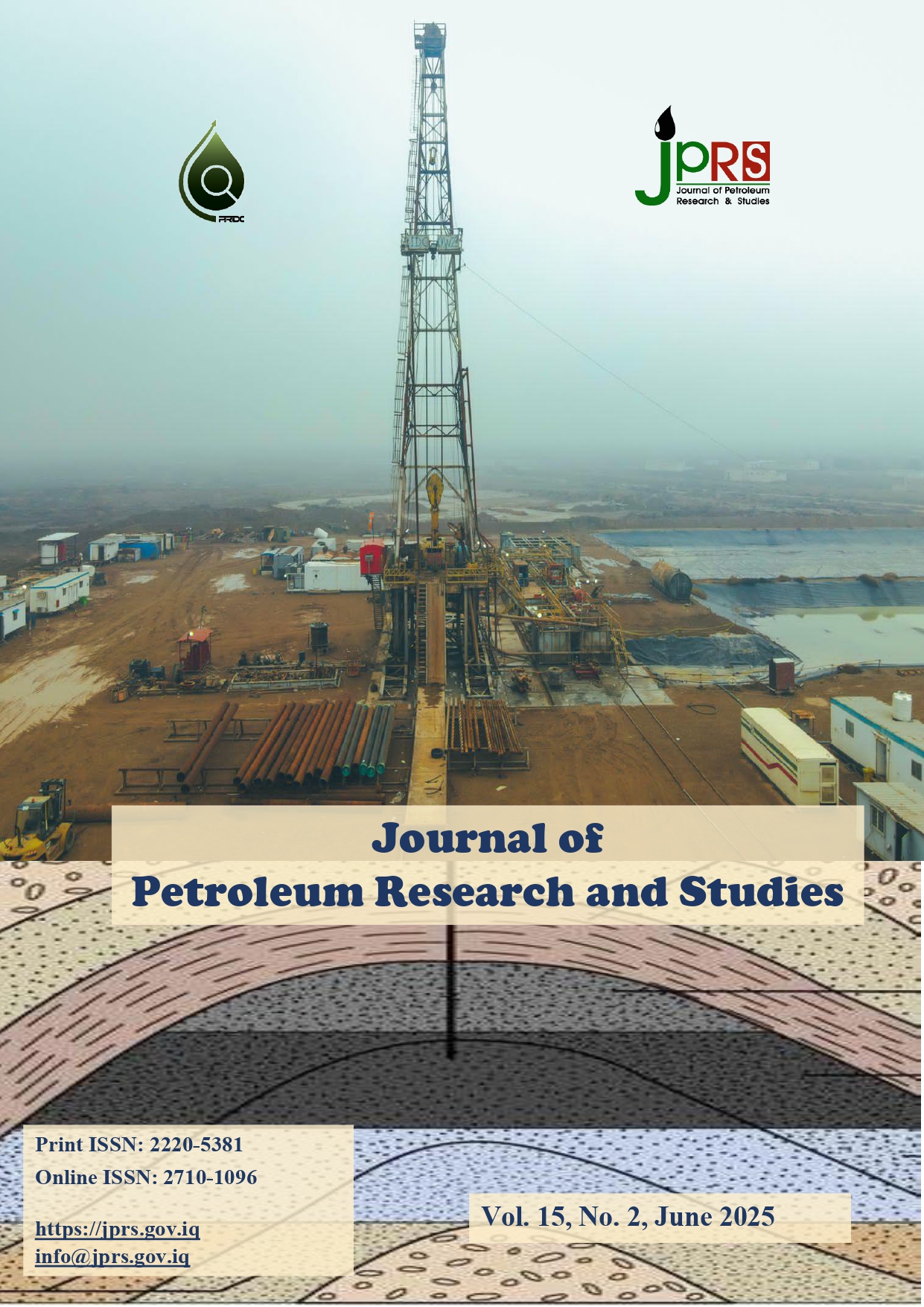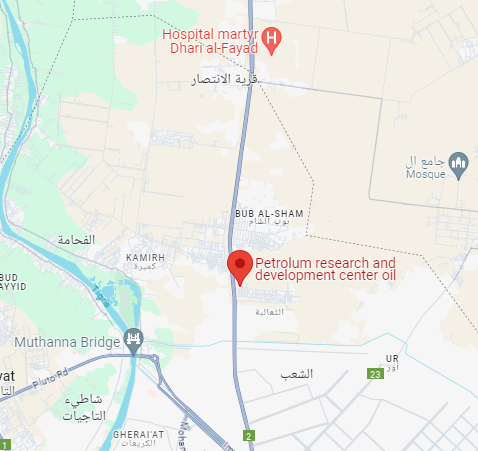دمج نظام التحكم (PID) والحماية الطارئة في معالجة الغاز الطبيعي: إطار نظري مع التركيز على تقنيات النمذجة والتحسين
DOI:
https://doi.org/10.52716/jprs.v15i2.847الكلمات المفتاحية:
Natural gas processing, Dynamic modeling, PID control system, Sensor regulation, Emergency protection system.الملخص
تُقدّم هذه الدراسة تطورات جديدة في عمليات معالجة الغاز الطبيعي بعد استخراجه من آبار النفط، والتركيز على النمذجة الديناميكية وتجارب التحكم لتحسين الكفاءة والسلامة. ولمواجهة تحديات الغاز ذو المحتوى النفطي العالي والمُعرّض لظروف قاسية أثناء الاستخراج، يستخدم بحثنا نظام تحكم PID متطورًا. يُخصّص نظام PID بشكل فريد المُكوّن التكاملي النسبي حصريًا للتحكم في مستوى الغاز، بينما يُنظّم كلا المُكوّنين الضغط ودرجة الحرارة. وتُكمّل آليات التحكم لدينا نظام حماية طوارئ مُتطوّر، مُزوّد بصمام تخفيف ضغط دقيق ومفتاح إيقاف تشغيل تلقائي، وتُقيّم إلى جانب أنواع أخرى، بما في ذلك وحدات التحكم في مساحة الحالة ووحدات التحكم التكيفية. ويُعتبر مُتحكّم PID المُقترح هو الأمثل، حيث يُعدّل المُخرجات باستمرار بناءً على التباين بين المُخرجات المطلوبة والفعلية. وبعيدًا عن استراتيجيات التحكم، تُسلّط الدراسة الضوء على الأثر التحويلي لمعالجة الغاز، وتحويل خصائص الغاز الطبيعي الخام إلى ميثان. وللنتائج آثارٌ كبيرة على صناعة معالجة الغاز، إذ تُحسّن الكفاءة التشغيلية، وتُعزّز إجراءات السلامة، وتُخفّض البصمة البيئية. من خلال عرض التطورات الرائدة في النمذجة الديناميكية وتجارب التحكم، يمهد هذا البحث الطريق للابتكارات المستقبلية، ودفع حدود تحسين نظام معالجة الغاز الطبيعي.
المراجع
S. Faramawy, T. Zaki, and A. A. E. Sakr, "Natural gas origin, composition, and processing: A review", Journal of Natural Gas Science and Engineering, vol. 1, no. 34, pp. 34-54, 2016. https://doi.org/10.1016/j.jngse.2016.06.030
A. S. Al-Jammali, "Study The Effect of The Main Variables on The Objectives of The Natural Gas Dehydration Plant by ASPEN-HYSYS v8.8", Journal of Petroleum Research and Studies, vol. 12, no. 2, pp. 47-63, 2022. https://doi.org/10.52716/jprs.v12i2.657
H. Yu, Q. Ye, H.. Xu, H Zhang, and X. Dai, "Design and Control of Dividing-Wall Column for tert-Butanol Dehydration System via Heterogeneous Azeotropic Distillation", Industrial & Engineering Chemistry Research, vol. 54, no. 13, pp. 3384-3397, 2015. https://doi.org/10.1021/ie504325g
E. B. Priyanka, C. Maheswari, M. Ponnibala, and S. Thangavel, "SCADA based remote monitoring and control of pressure & flow in fluid transport system using IMC-PID controller", Advances in Systems Science and Applications, vol. 19, no. 3, pp. 140-162, 2019. https://doi.org/10.25728/assa.2019.19.3.676
H. H. Manap, A. K. Wahab, and F. M. Zuki, "Control for carbon dioxide exchange process in a membrane oxygenator using online self-tuning fuzzy-PID controller", Biomedical signal processing and control, vol. 64, 2021. https://doi.org/10.1016/j.bspc.2020.102300
A. H. Haroun and Y. Li, "A novel optimized hybrid fuzzy logic intelligent PID controller for an interconnected multi-area power system with physical constraints and boiler dynamics", ISA Transactions, vol. 71, no. 2, pp. 364-379, 2017. https://doi.org/10.1016/j.isatra.2017.09.003
M. S. Al-Radhi, S. J. Al-Kamil, and T. Szakács, "A model-based machine learning to develop a PLC control system for Rumaila degassing stations", Journal of Petroleum Research and Studies, vol. 10, no. 4, pp. 1-18, 2020. https://doi.org/10.52716/jprs.v10i4.364
M. Huang, M. Tian, Y. Liu, Y. Zhang, and J. Zhou, "Parameter optimization of PID controller for water and fertilizer control system based on partial attraction adaptive firefly algorithm," Scientific reports, vol. 12, Article number: 12182, 2022. https://doi.org/10.1038/s41598-022-16425-7
J. Foiret and K. W. Ferrara, "Spatial and temporal control of hyperthermia using real time thermal strain imaging with motion compensation", IEEE International Ultrasonics Symposium, pp. 2133-2136, 2014. https://doi.org/10.1109/ULTSYM.2014.0531
M.R. Riazi, S. Eser, S.S. Agrawal, J.L. Peña Díez, "Petroleum Refining and Natural Gas Processing", West Conshohocken, PA: ASTM International, 2013. https://doi.org/10.1520/MNL58-EB
M. Z. U. Rahman, M. Rizwan, R. Liaquat, V. Leiva, and M. Muddasar, "Model-based optimal and robust control of renewable hydrogen gas production in a fed-batch microbial electrolysis cell", International Journal of Hydrogen Energy, vol. 48, no. 79, pp. 30685-30701, 2023. https://doi.org/10.1016/j.ijhydene.2023.04.184
M. Javaid, A. Haleem, R. P. Singh, S. Rab, and R. Suman, "Significance of sensors for industry 4.0: Roles, capabilities, and applications", Sensors International, vol. 2, pp. 100-110, 2021. https://doi.org/10.1016/j.sintl.2021.100110
R.D. Fernández, R.R. Peña, and C.A. Sosa-Tellechea, "Robust Linear PID Control of a Pressure Reducing Valve", Journal of Hydraulic Engineering, vol. 149, no. 2, 2023. https://doi.org/10.1061/JHEND8.HYENG-13234
H. Wang, T. Zou, H. Zheng, Z. Yang, and J. Wang, "A double-layer model predictive control algorithm for valve position control systems", Proceedings of the Institution of Mechanical Engineers, Part I: Journal of Systems and Control Engineering, vol. 237, no. 3, pp. 539-550, 2023. https://doi.org/10.1177/09596518221127506
B. Almadani, N. Alshammari, and A. Al-Roubaiey, "Adaptive Cruise Control Based On Real-Time Dds Middleware", IEEE Access, vol. 11, pp. 75407-75423, 2023. https://doi.org/10.1109/ACCESS.2023.3296317
D. Wang, D. Tan, and L. Liu, "Particle swarm optimization algorithm: an overview", Soft computing, vol. 22, pp. 387-408, 2018. https://doi.org/10.1007/s00500-016-2474-6
R.T. Daryani, "Integration and Operation of Fuel Cell and Gas Heating System by Fuzzy Logic Control", Integrated Systems: Innovations and Applications, pp. 39-54, 2015. https://doi.org/10.1007/978-3-319-15898-3_3
التنزيلات
منشور
كيفية الاقتباس
إصدار
القسم
الرخصة
الحقوق الفكرية (c) 2025 Sabreen H. Nasser, Mohammed S. Al-Radhi

هذا العمل مرخص بموجب Creative Commons Attribution 4.0 International License.














